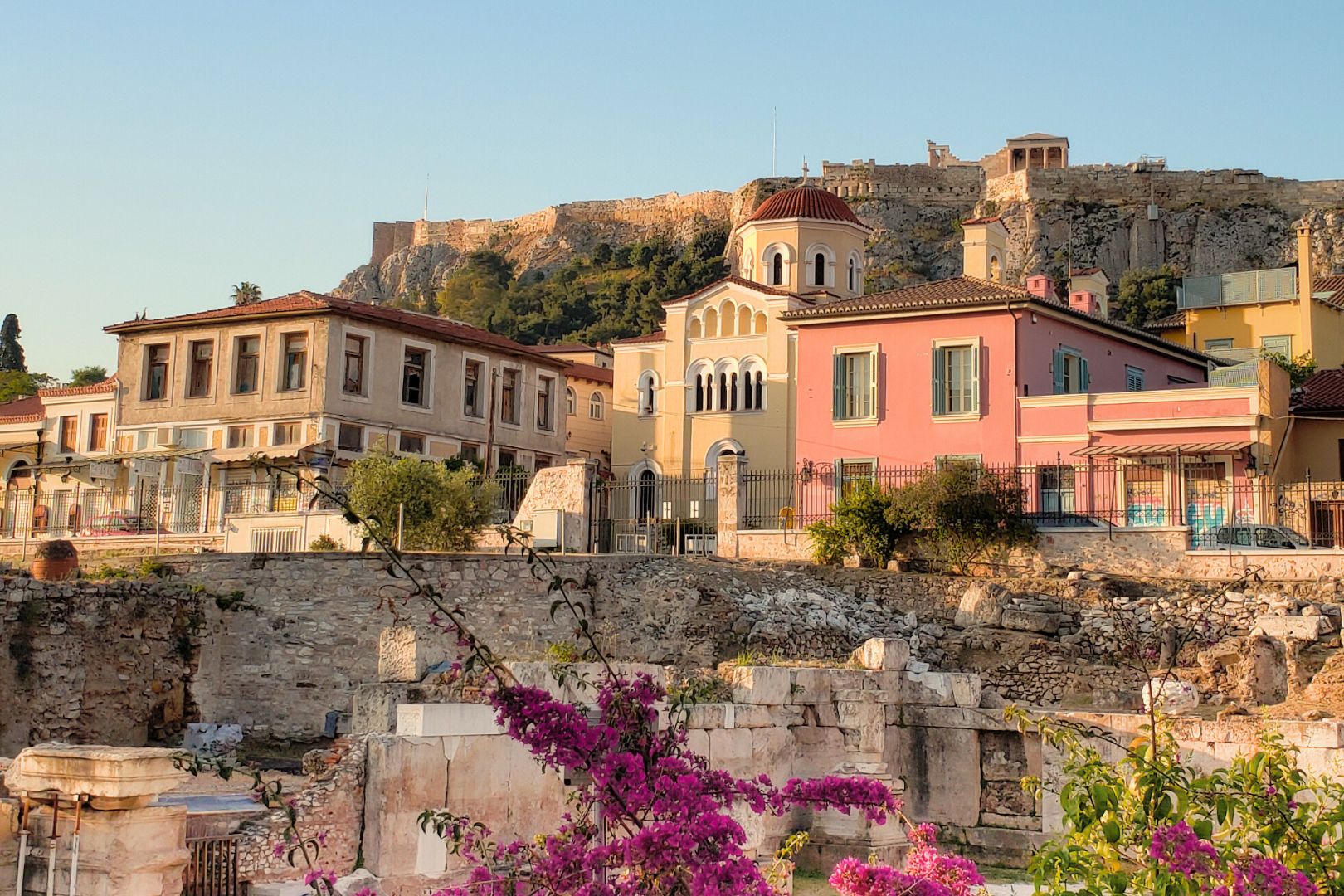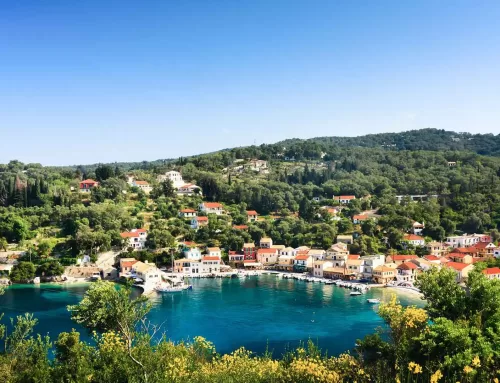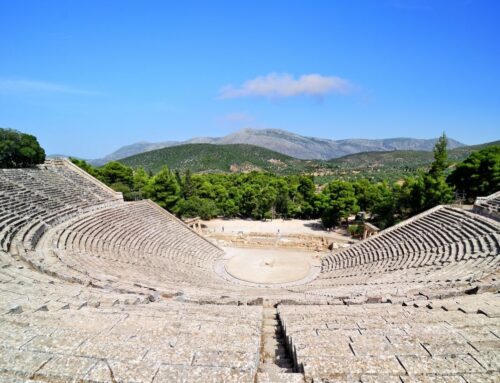
Exploring the Heart of Athens – The Acropolis and its surrounding neighborhoods
Exploring the Heart of Athens – The Acropolis and its surrounding neighborhoods

Search for your next destination...
☞ Table of Contents:
Athens, a city where history breathes through every stone, finds its most iconic landmark standing proudly atop the Acropolis.
Many travelers mistake the Acropolis for just the Parthenon, but this sacred rock has more to share. The Acropolis Hill is an entire archaeological complex, home to multiple ancient structures beyond the famous temple.
The Parthenon is one magnificent piece of a larger, intricate historical landscape.
The Acropolis hill is a dynamic storyteller – each rock, each ancient fragment carrying whispers of epic tales. A limestone hill that has witnessed thousands of years of human civilization. A living canvas where ancient stones whisper stories of philosophers, artists, and ordinary people who have called this landscape home.
Philosophers like Plato and Aristotle debated here. Artists found inspiration in its rugged contours. Civilizations rose and fell, leaving their imprint on every weathered stone and hidden pathway. In this article, we’ll explore the hidden stories most travelers miss.
Beyond the famous hill lies a complex urban ecosystem. Neighborhoods sprawl across the city’s slopes, each district a unique chapter in Athens’ continuous narrative. Narrow streets wind through layers of history, where Byzantine churches stand alongside Ottoman-era houses, and modern life pulses through ancient veins.
The neighborhoods around the Acropolis are alive. Streets and buildings full of stories waiting to be discovered, carrying the heartbeat of Athens through time.
Let’s see what Acropolis includes…

The Acropolis: A Timeless Beacon
Rising 156 meters above sea level, the Acropolis stands as a testament to human creativity and resilience. Archaeological evidence suggests human presence on this hill dates back to the Neolithic period, around 4000 BCE. The Parthenon, crowned atop this rocky plateau, represents the pinnacle of classical Greek architecture – a temple dedicated to Athena, the city’s patron goddess.

Neighborhoods at the Foot of the Sacred Rock
Plaka: The Oldest Neighborhood of Athens
Nestled directly beneath the Acropolis, Plaka is often called the “Neighborhood of the Gods.” Its narrow, winding streets are a living museum of 19th-century Athenian architecture. Neoclassical mansions with vibrant bougainvillea, traditional tavernas, and artisan shops create a romantic atmosphere that transports visitors to another era.
Hidden Treasures of Plaka
- The St Nikolaos Ragkavas church
- The Canellopoulos Museum https://pacf.gr/en/
- The most ancient street: Tripodon Street Running through the ancient neighborhood of Plaka, Tripodon Street is considered the oldest street in Athens still in use. Dating back to the 5th century BCE, it was once the main street of the ancient city’s theatrical district.
Anafiotika: A Cycladic Island in the Heart of Athens
Perhaps the most charming and least-known neighborhood, Anafiotika feels like a small Cycladic island magically transported to Athens. This tiny neighborhood features small white-washed houses with blue doors and windows, creating a stark contrast to the urban landscape. Anafiotika was built by workers from the island of Anafi who were hired to help restore King Otto’s Palace, bringing their Cycladic architectural style to the heart of Athens.
Fun facts about Anafiotika
- There are only about 45 tiny houses, each with its own unique charm.
- The neighborhood was built without formal urban planning, giving it an organic and whimsical layout.
- Narrow, stepped paths wind through the area, perfect for wandering and taking photos.
- The houses are so close together that some have just inches of space between them!
- Locals and visitors alike adore the gardens filled with potted plants and vibrant bougainvillea, adding to the island vibe.
Monastiraki
Monastiraki and its vibrant square serves as a meeting point for locals and visitors, surrounded by historical landmarks, lively souvlaki restaurants, and bustling shops.
Beneath its streets flows the Iridanos River, a remnant of ancient Athens, which can still be glimpsed through a glass covering in Monastiraki Square. Strolling through its narrow streets, you’ll find layers of history intertwined with modern-day energy, making it one of the most fascinating spots in Athens.
Fun facts about Monastiraki
- Monastiraki Square is a melting pot of cultures, with influences from Greek, Ottoman, and Roman history visible in its architecture.
- The nearby Hadrian’s Library, built in 132 AD, was once a grand repository of books and scrolls.
- The neighborhood is home to several Byzantine churches, including the 10th-century Church of the Pantanassa.
- The Monastiraki Flea Market isn’t just for shopping—it’s a lively experience with street performers, local food vendors, and hidden antique gems.
- Monastiraki got its name from the small monastery (monastiraki) that once stood in the square.
Psyrri: The Artistic Quarter
Once a working-class neighborhood, Psyrri has reinvented itself as one of Athens’ most vibrant creative hubs. Known for its edgy charm, it’s a district where street art tells stories, boutique workshops craft unique treasures, and trendy restaurants serve up modern Greek cuisine alongside international flavors. By day, it’s a haven for art lovers and shoppers; by night, the area comes alive with bars and live music venues, making it a favorite spot for both locals and visitors.
Fun facts about Psyrri
- Psyrri is a treasure trove for collectors, with numerous antique shops offering everything from vintage furniture to unique trinkets.
- The area is home to several traditional hammams, where locals and visitors can experience a piece of the Ottoman heritage.
- It’s a great spot for live rembetiko music, a genre that embodies the soul of Greek urban folk culture.

Churches of Significance
The area around the Acropolis hosts numerous significant churches:
- Church of Panagia Gorgoepikoos: This 12th-century Byzantine church sits behind the Metropolitan Cathedral and was built on the ruins of an ancient temple dedicated to Eileithyia, the goddess of childbirth and labor. Its serene atmosphere offers a peaceful escape from the bustling area.
- Church of the Holy Apostles: Nestled in the Ancient Agora, this 11th-century church is a stunning example of medieval Greek architecture, featuring intricate brickwork and a beautiful dome. Its historical and religious significance make it a true gem of Byzantine Athens.
- Kapnikarea Church: Located at the intersection of busy Ermou Street, this 11th-century Byzantine church stands as a quiet reminder of the city’s ancient roots. Despite its modest size, it boasts beautiful mosaics and frescoes, offering a serene contrast to the surrounding commercial hub.
- Agia Dynami: A small but fascinating 16th-century church, believed to be built on the site of an ancient Heracles temple. Known for its underground cave and the legendary tunnel that supposedly extends all the way to Kaisariani, this church holds an air of mystery and hidden history.

Best Time to Visit
- Spring (April-May) and Autumn (September-October) are ideal for mild temperatures, making it comfortable to explore the area without the intense heat of summer. No matter the season, these neighborhoods offer something special. I’ve walked through them in the winter, when the streets are dusted with snow, and they have a serene, magical quality that you can’t experience at any other time of year.
- For the best photographic light, visit in the early morning or late afternoon, when the soft, golden glow enhances the beauty of the ancient streets and landmarks.
- Mid-summer can be overwhelming with the heat and the peak tourist crowds, so it’s best to avoid the busiest months if you prefer a more peaceful experience.
Walking Tips
- Be sure to wear comfortable walking shoes – the cobbled streets, uneven paths, and ancient steps require sturdy footwear.
- Stay hydrated and use sun protection, especially if you’re visiting during the warmer months. Keep in mind that in some areas of the hill, there aren’t many places to buy water, so it’s a good idea to bring your own and stay refreshed as you explore.
- Allow at least half a day to wander through the neighborhoods at a leisurely pace. The beauty is in the details, and there’s plenty to discover if you take your time.
Conclusion
The neighborhoods around the Acropolis are far more than just tourist destinations!
Here, history is not confined to museums or ancient ruins—it’s lived and experienced in the vibrant atmosphere of the streets.
To help you navigate these historic neighborhoods and discover more hidden gems, I’ve created an interactive map of Athens with all my handpicked recommendations. Whether you’re planning your visit or just dreaming of your next trip, you can explore the best spots Athens has to offer with ease.
View our FREE master guide for Athens here!
It includes an interactive map!
*Disclaimer: This page might include affiliate links. If you decide to book something through one of them, I might get a little bonus, but it won't cost you anything extra.*

























